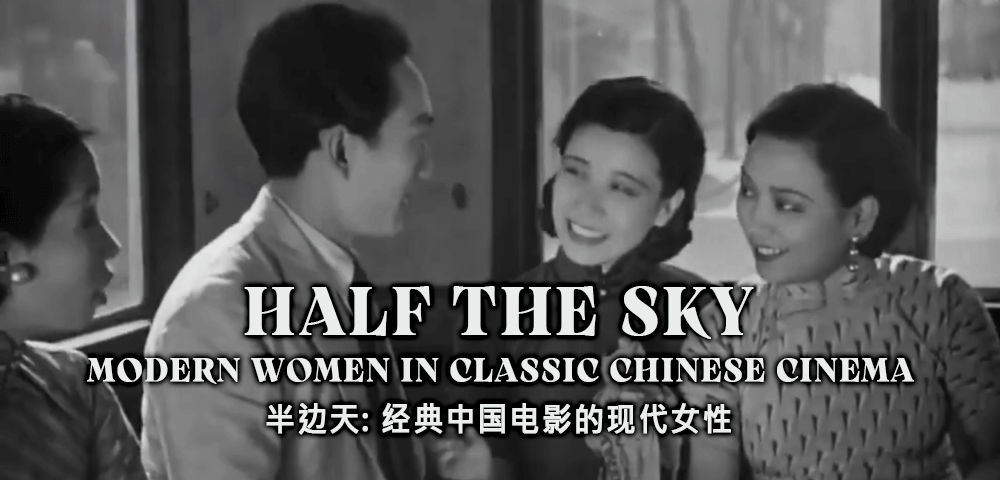To commemorate Asian-American and Pacific Islander Heritage Month, Spectacle Theater is proud to present HALF THE SKY, a new series examining the evolving depictions of, and cultural attitudes towards, the role of women in Chinese society during the early years of the Chinese film industry.
Following the end of China’s dynastic era and the founding of republican China in 1912, cinema had exploded in popularity throughout the country. By the 1930s, studios, filmmakers, and performers began to realize the medium’s massive potential for widespread social and political messaging. In the decades that followed, cinema became an invaluable tool in disseminating progressive ideologies among the masses in what became known as the “Golden Age” of China’s leftist cinema movement.
There was arguably no greater aspect of Chinese society where these shifting perspectives were more pronounced than concerning the role of women. Historically, Chinese society had operated on a conservative model of gender roles in which a woman’s ostensible purpose was to strive to be a “virtuous wife and good mother” (贤妻良母)— A model that was effectively continued under China’s Nationalist government which promoted the virtues of marital monogamy and child rearing while cracking down on vices like prostitution and gambling.
Many of the creative voices working within China’s film industry, however, saw another story: One in which education and moral character were more important to good citizenship than tradition for tradition’s sake. Filmmakers like Sun Yu, Wu Yonggang, and Cai Chusheng began to incorporate these ideas directly into their work, crafting female-centric stories that expanded beyond archetypal gender roles and instead focused on the woman workers, artists, farmers, athletes, soldiers, warriors, wives, and mothers who were as integral to modern society as their male counterparts. China’s leftist cinema movement ultimately helped revolutionize the role of women in Chinese society, reinforcing the government’s obligations towards gender equality that, within a few short decades, would culminate in Mao Zedong’s famous 1968 pronouncement that, “Women hold up half the sky.”
We return to the series this month with two 1940s releases by the team of director Sang Hu and novelist/essayist-turned-screenwriter Chang Ai-ling, aka Eileen Chang.
Where the last installment of the series centered around two adaptations of centuries-old folk tales, steeped in tradition but imbued with new meaning among wartime audiences, this installment features two romance stories firmly rooted in the economic and social concerns of the present day. Both films were produced in the wake of the Second Sino-Japanese War, against a backdrop of a civil war, hyperinflation, and skyrocketing unemployment. Yet despite these circumstances, Sang and Chang’s films resonated deeply with post-war audiences, owing to their nuanced takes on the universally shared— yet still often private— affairs of love, family, marriage, and divorce.
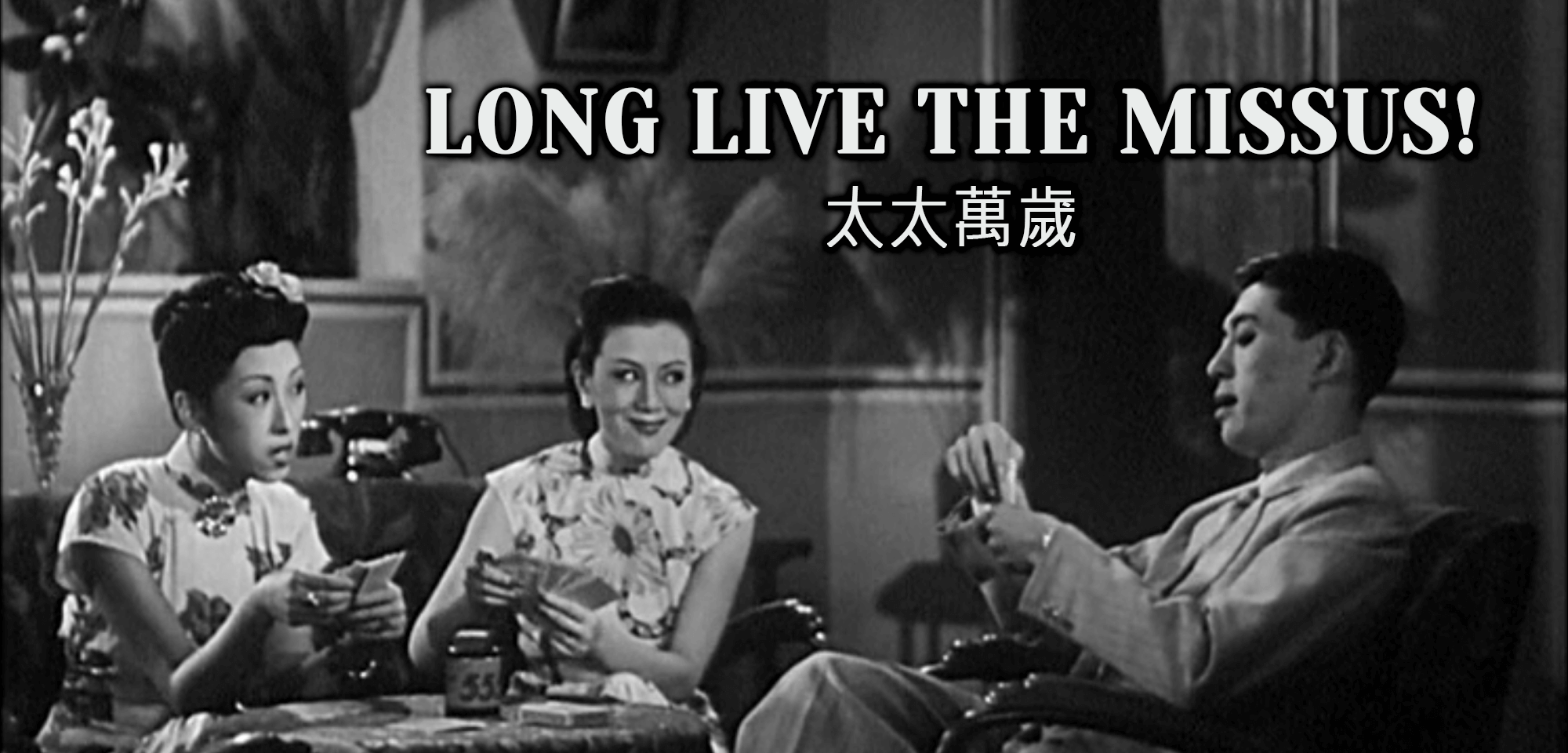
LONG LIVE THE MISSUS!
(太太萬歲)
dir. Sang Hu, 1947
China. 112 min.
In Mandarin with English subtitles.
WEDNESDAY, MAY 1 – 7:30 PM
FRIDAY, MAY 10 – 5 PM
MONDAY, MAY 13 – 10 PM
FRIDAY, MAY 31 – 7:30 PM
Chen Sizhen is a married woman belonging to a middle-class Shanghai family. Her husband, Tang Zhiyuan, is an ambitious but incompetent bank clerk, looking to launch a business with the financial support of his father-in-law. Blinded by the stability provided by his new (albeit, short-term) financial gain, he falls prey to a gold-digging mistress, neglecting his professional and personal responsibilities to the point of bankruptcy. Zhiyuan blames Sizhen for his misfortune and demands a divorce, unaware that Sizhen may be the only one able to save her family’s business, marriage, and good name.
As domestic film production slowed during the war, Western (wenyi) film and literature began to grow in popularity, with romantic comedies and melodramas among the most popular imports. For new screenwriter Eileen Chang, whose earlier fiction work typically challenged the social conventions of Chinese society, a film in the vein of a Hollywood screwball comedy was a natural fit. Chang’s script is rife with the romantic conflicts, contradictions, and coincidences that similarly characterized many of Hays-era Hollywood’s “comedies of remarriage”, while providing incisive commentary on the pressure and expectation to conform to traditional family roles— daughter, wife, mother, in-law— as the country barrelled into the modern post-war era.
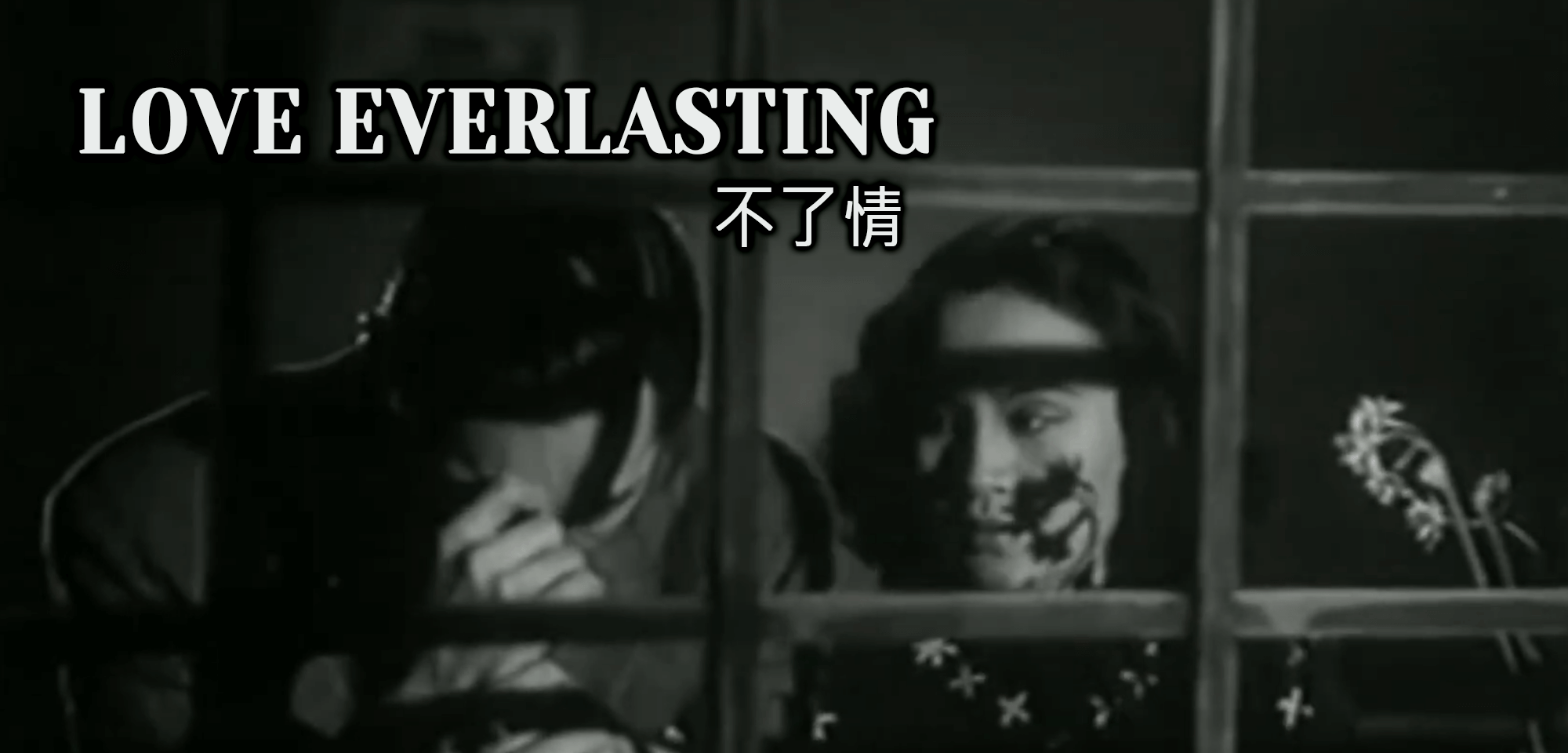
LOVE EVERLASTING
(不了情)
dir. Sang Hu, 1947
China. 94 min.
In Mandarin with English subtitles.
MONDAY, MAY 6 – 10 PM
SATURDAY, MAY 11 – 5 PM
FRIDAY, MAY 24 – 5 PM
Yu Jiayin, a young female professional, moves to Shanghai where she’s hired as the in-house tutor to the daughter of a married businessman, Xia Zongyu, beginning an ill-fated love affair with him in the process. When her own boorish father shows up to try and exploit the situation for his own gain, coupled with the arrival of Zongyu’s sickly wife from the countryside, Jiayin must find a way to prevent an already comprising and unbearable situation from becoming even worse.
Loosely modeled after Charlotte Bronte’s Jane Eyre, the film is notable for being the first screenplay of author Eileen Chang’s to have been produced. Chang became a literary sensation in China in her twenties thanks to the back-to-back successes of her short story collection, Romances, and debut novel, Love in a Fallen City, both published in 1945. However, with that success came an elevated public profile, leading to controversy over her husband’s wartime affiliations during the period of Japanese occupation. Finding it increasingly difficult to find literary work in Shanghai, Chang turned to screenwriting for the newly-established Wenhua Film Company, penning four successful works for them within a few short years (three of which were directed by Sang Hu). Chang fled to Hong Kong in the early-1950s where she would later revive her career as a novelist and essayist, eventually publishing her widely celebrated, decades-in-the-making roman à clef, Lust, Caution.
Special thanks to Christopher Rea of the University of British Columbia and Eileen Cheng-yin Chow of Duke University.
See below for previous films screened as part of this program.
The series continues this July with two female-centric genre films that draw from China’s rich literary history. The first, Bu Wancang’s HUA MULAN, is an early adaptation of the classic folk ballad about a young woman who takes her father’s place in the army by disguising herself as a man. The second is the Wan brothers’ PRINCESS IRON FAN, the first fully-animated sound feature to be produced in China, adapted from a short vignette featured in one of China’s “Four Great Classical Novels”, Journey to the West.
Despite their centuries-old source material, both films could not have been more relevant to audiences of the 1930s and 40s. Both were produced and released during the Japanese occupation of China, and as such, contain thinly-veiled allegories of resistance against outside forces. Similarly, both films’ blending of traditional narratives with contemporary politics, themes, and technologies resonated broadly, with Chinese audiences— On one hand reinforcing the universality of the ideals promoted by the leftist cinema movement, while on the other, providing audiences with entertainment that was distinctly identifiable as their own at a time when the country’s heritage and sense of modernity was under threat.
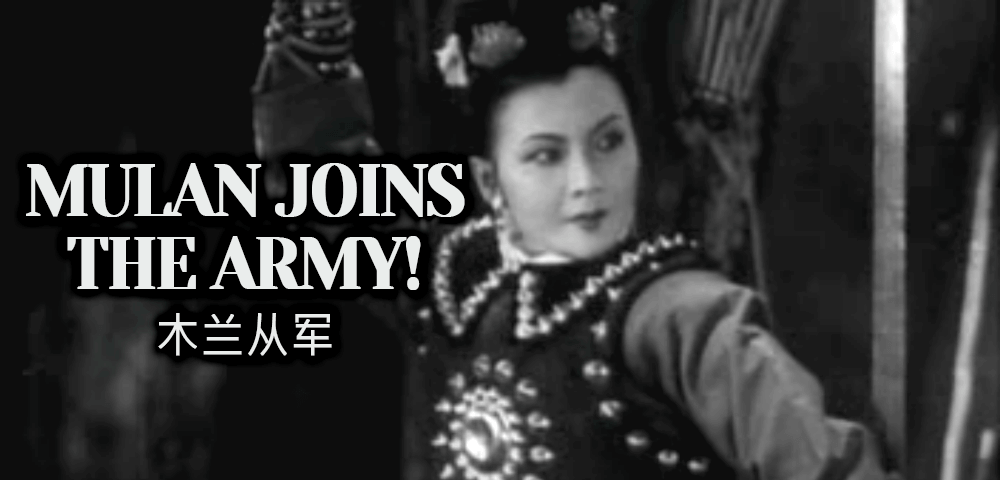
MULAN JOINS THE ARMY!
(木蘭從軍)
dir. Bu Wancang, 1939
China. 90 min.
In Mandarin with English subtitles.
Based on the sixth century Chinese folk ballad, the film follows the story of Hua Mulan, a young warrior maiden who secretly takes her elderly father’s place in the army by disguising herself as a man. Mulan’s prowess as a soldier and strategist catches the attention of her superiors, allowing her to rise through the ranks of the Tang dynasty.
By the beginning of the Second Sino-Japanese War in 1937, production in China’s ostensible film capital of Shanghai had become scarce. Many of the city’s biggest talents, both in front of and behind the camera, had relocated to the regional film industries of Chongqing, colonial Hong Kong, and Singapore, leaving a dearth of new script ideas and big-name stars to draw in audiences. Yet at the same time, demand for films could not have been higher. With most of the city under Japanese occupation, millions of refugees fled to Shanghai’s foreign concessions still under Western jurisdiction, leading to an anomalous economic boom in those areas that included the construction of six new cinemas.
Bringing together whatever resources they could muster— a recycled folk tale, a Hunanese playwright, a Cantonese star— director Bu Wancang and Xinhua Film Company head, Zhang Shankunto, wound up creating what would become, the most popular film in China at that time, playing to consistently packed houses, and remaining on screen in Shanghai for over 12 weeks. The film’s boldly patriotic tone— in essence, a call to arms against the oppression of invading forces— appealed enormously to wartime audiences in Shanghai, especially with women for whom its title heroine represented their own expectations, limitations, and possibilities in challenging the established social order.
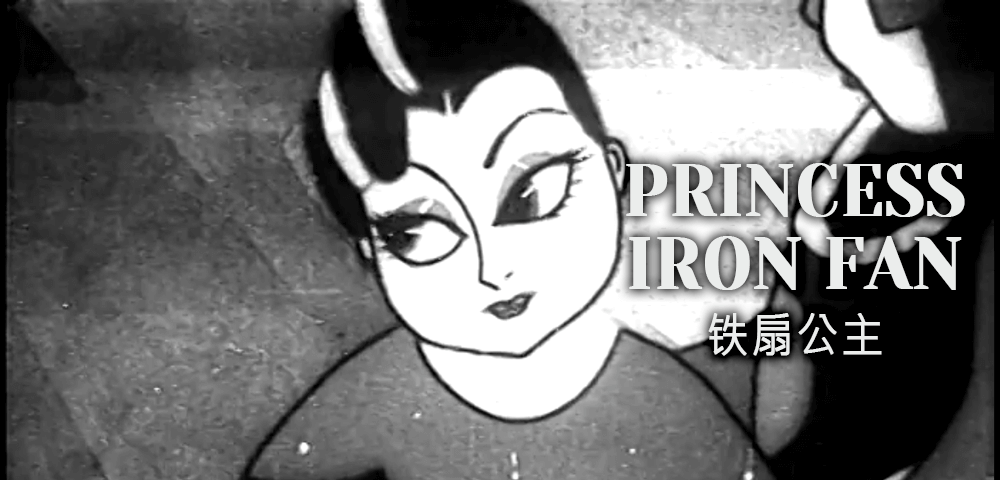
PRINCESS IRON FAN
(鐵扇公主)
dir. Wan Guchan & Wan Laiming, 1941
China. 73 min.
In Mandarin with English subtitles.
Chinese first fully-animated feature film was an enormously influential work that broke new ground for Chinese and Japanese animation. Based on a short passage from Wu Cheng’en’s 16th century epic, Journey to the West, the film brings to life the tale of the Monkey King’s duel with a vengeful princess, whose fabled fan is needed to quench the flames surrounding a peasant village.
The Wan twins, along with their brothers, Wan Chaochen and Wan Dihuan, were some of China’s earliest established animators. In 1939, after viewing Walt Disney’s SNOW WHITE AND THE SEVEN DWARFS for the first time, the brothers began their attempt to make a film of equal length and quality for a national audience. Despite suffering the same difficulties that other productions around were facing at the time, the brothers endured, and after three years, 237 artists, and over 20,000 frames, released their masterpiece to rapturous praise.
PRINCESS IRON FAN became another wildly popular success during wartime China. Though less explicitly political than HUA MULAN, the film contains a similar blend of traditional stories and contemporary themes, including a protagonist that embodies female strength and power, serving as a symbol of resistance in her own right. The film also represented a major leap forward in the country’s use of cinematic technology, the Wan brothers being some of the earliest adopters of the rotoscoping and compositing techniques developed by their American contemporaries, the Fleischer brothers. The film’s popularity also extended beyond China’s borders, becoming a sensation in Japan in spite of the ongoing war, and inspiring a young Osamu Tezuka— later dubbed the “Father of Manga”— to study illustration.
The first installment of this series focuses on two iconic works starring Ruan Lingyu. Ruan was an early sensation in Chinese silent cinema, dubbed the “Chinese Garbo” due to a level of popularity that rivaled that of her Hollywood contemporary. By the early 1930s, Ruan had become Linhua Studio’s most popular star, thanks to her indelible performances in a successful string of collaborations with leftist Chinese directors. Ruan’s characters were freqeuently headstrong, educated, and resourceful women whose personal aspirations—romantic, professional, or otherwise— were oftentimes at odds with the external expectations foisted upon her. In short, distinctly “modern” women whose struggles resonated deeply with Chinese audiences.
With that popularity, though, came unprecedented levels of public scrutiny and media attention, fueled in large part by a predatory tabloid culture that mercilessly seized upon every aspect of her private life. Tragically, Ruan died by suicide in 1935 at the age of 24, in a letter to the public, condemning the vindictive press coverage that pushed her private affairs out into public view with the devastating comment that, “Gossip is a fearful thing” (人言可畏). Yet although her life and career were sadly cut short, Ruan’s star continued to burn bright in the public’s eye, her memorable characters becoming symbols for the degrees of visibility, agency, and self-determination to which modern women aspired, and her own story becoming a parable for the injustices of a strict patriarchal society.
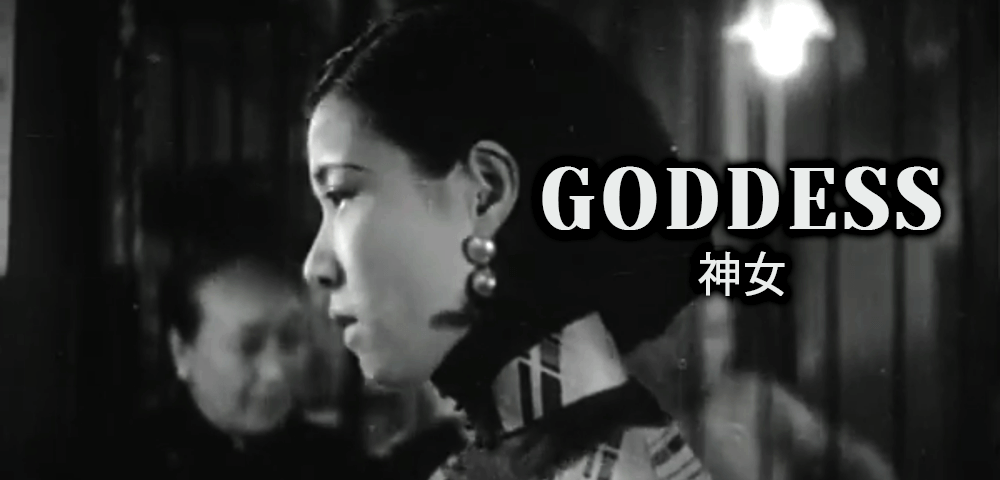
GODDESS
(神女)
dir. Wu Yonggang, 1934
85 min. China.
Silent with Chinese & English intertitles.
Considered to be the most celebrated work produced during China’s silent film era, Wu Yonggang’s GODDESS is a devastating take on the “fallen woman” archetype, noted for its incredibly frank yet compassionate depiction of sex work at a time when it was widely seen as a societal ill. Set in 1930s Shanghai, Ruan Lingyu plays an unnamed mother, credited only as the “Goddess”, who sacrifices everything for the sake of her son’s happiness and education. One evening, while attempting to avoid a police sweep, she falls in with a local “Boss” who has his own plans in store for her and her son.
GODDESS touches on a host of contemporary issues that were the subject of social reforms throughout the 1920s and 30s— most notably, prostitution and education. The type of police sweep that resulted in the degenerate “Boss” entering the protagonist’s life was a common occurrence in 1930s Shanghai; a direct result of the New Life Movement that pushed sex work away from familiar local settings and into the city’s more dangerous foreign concessions. Likewise, the subplot involving her son’s school enrollment echoed calls from progressives that it was the responsibility of educators to provide an education to any child, regardless of their upbringing; relating back to the Confucian ideology termed “education without discrimination” (有教无类).
Even Wu’s choice of title carries with it a deeper meaning in its larger cultural context, on the one hand translating literally to “woman god”, while on the other, recognizable to Chinese audiences as a common euphemism for “streetwalkers”— as if to suggest that the two are one in the same.
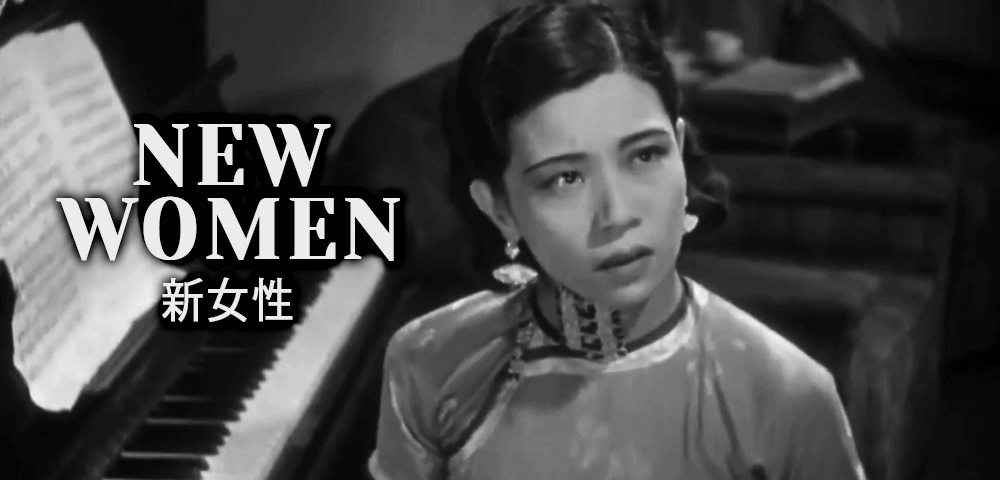
NEW WOMEN
(新女性)
dir. Cai Chusheng, 1935
106 min. China.
In Mandarin (dubbed) with English subtitles.
Ruan Lingyu, in her penultimate screen appearance, stars as Wei Ming, a migrant worker, aspiring writer, and single mother who supports herself by teaching music at a local girls’ school. When her daughter falls severely ill, Wei makes a series of difficult decisions to try and ensure the safety of herself and her family, which consequently makes her the target of a vicious smear campaign led by a powerful man whose advances she previously rejected.
Cai Chusheng’s film became a watershed moment in the Chinese leftist cinema movement, largely due to the multiple controversies surrounding its release. Originally conceived of and marketed as a social issue movie whose intention was to explore “the woman question” (妇女问题), its release was met with swift backlash by both the press and government— the former due to the film’s unflattering depiction of the same tabloid culture that was invariably responsible for its star’s demise, and the latter for the challenge the film posed towards the constraints of established gender roles which at the time was (unsurprisingly) framed as a rebuke of “traditional family values”.
Moreover, NEW WOMEN’s release was gravely overshadowed by the death of Ruan Lingyu the following month, whose suicide eerily echoed that of the actress and writer, Ai Xia, on whom the character of Wei Ming was loosely based. Like Ruan, Ai had been the subject of a slanderous tabloid campaign that wound up contributing towards her tragic decision to take her own life just a year prior. Ultimately all three women central to the film— Ai, Ruan, and the character of Wei— found themselves victims of a society that placed greater value on the optics of traditional womanhood than the person each aspired to be— in essence, validating the film’s very thesis.

